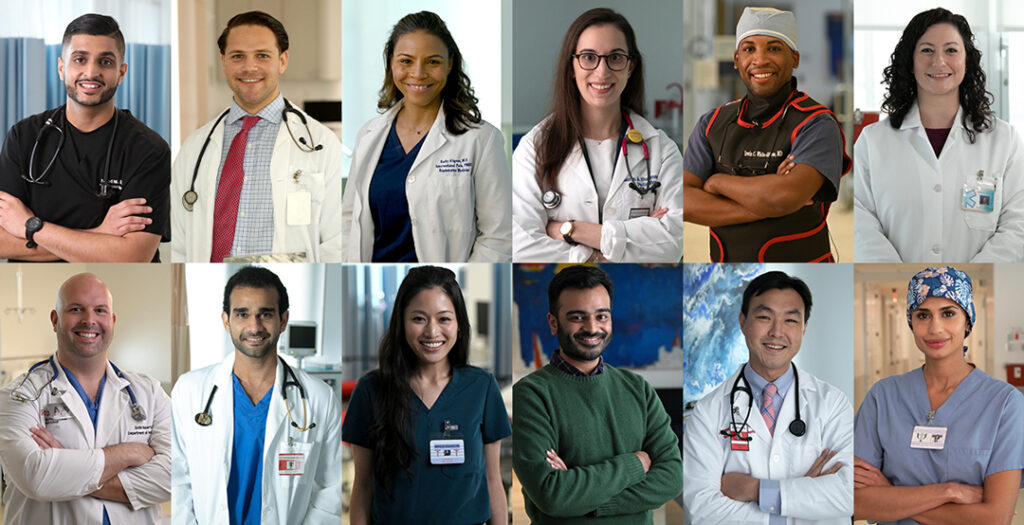One of the lessons many of us inevitably had to learn during the pandemic is how to make the best of a difficult situation. You can apply similar strategies for staying optimistic and motivated during challenging situations to your medical school experience.
During the pandemic, St. George’s University (SGU) School of Medicine quickly pivoted to online learning as the health and safety of the campus community was a clear priority to the University. Yet, offering medical education online was an entirely new experience, one with many new challenges and benefits alike.
With the convenience and comfort of online learning, it is clear why prospective medical students may seek out online learning options. Where one might ask, “Can you attend medical school online?” they should alternatively consider the question “Should you attend medical school online?” when in-person options exist.
The SGU community learned that teaching and learning medicine online, while possible, is not the same experience as in-person, hands-on learning at a campus in the Caribbean or onsite at a hospital.
“Everyone at SGU has the same goal, and that is student success. We transitioned to online education smoothly and quickly during the pandemic, but every school has shown that their students do better if they have in-person learning,” says Dr. Lucy Clunes, SGU’s dean of students.
The benefits of in-person learning in medical school
The benefits of in-person learning are abundant, particularly for those studying medicine. There are many reasons for this, including clinical rotations in hospitals. Clinical rotations, also called clerkships, give medical students firsthand experience in working with patients under the direct supervision of a faculty member, fellow, or resident. Typically completed during the third and fourth years of their Doctor of Medicine (MD) programs, clinicals are crucial for med students to hone their technical skills and bedside manner. At SGU, students are offered clinical rotations through more than 75 hospitals and health systems in the US, UK, and Canada.
When it comes to preparing students for clinical rotations, Dr. Anna Maria Cyrus-Murden, Director of the Simulation Center and Assistant Dean of Simulation, believes that in-person instruction is critical.
According to Dr. Cyrus-Murden, “In-person instruction facilitates mentorship, role modeling, and feedback, allowing students to not only learn about medicine but also embody the values and professional characteristics of compassionate and competent healthcare practitioners. Overall, the immersive nature of in-person instruction is critical in providing medical students with the clinical knowledge, practical skills, and professional demeanor required for success in their future clinical practice.”
In other words, the skills that students must develop for clinicals go beyond technical and basic sciences knowledge.
How can fully online medical school programs compete with the learned muscle memory from taking someone’s vitals? Or the wealth of anatomical knowledge from practicing on a cadaver? Or becoming proficient at reading the non-verbal cues from patients?
Transitioning from online learning
The changes made during the pandemic were essential to keep students’ paths to MD as uninterrupted as possible while also keeping them safe. SGU offered self-paced, independent study as the school’s globally diverse group of students returned home to time zones across the world. Students expressed appreciation for the increased flexibility in their schedules.
SGU’s School of Medicine created online learning programs for basic science students that were robust and interactive with live lectures, labs, virtual training sessions teaching skills for clinicals, and other innovative ways to connect students to valuable information and resources.
“Simulated technology and learning emerged as pivotal components of medical education,” Dr. Cyrus-Murden says. “Virtual simulation enabled students to hone their skills and participate in realistic scenarios from the safety of their homes. Moreover, the challenges posed by the pandemic spurred the development of novel technologies to enhance simulated learning experiences.”
However, even with the provisions put in place to set students up for success, one fact became clear: in-person learning has essential, irreplicable educational benefits.
Medicine is not a one-person sport
“Medicine is not a one-person sport,” says Dr. Clunes. “It requires a team, and part of what you learn during medical school is how to be an effective team member as well as how to utilize other team members skills to ensure patient success.”
Dr. Clunes also believes that in-person instruction is not only beneficial for the learning of students, but for faculty and how they interact socially with students.
“Part of student life is learning professionalism, timekeeping, etc., as well as the academic content. Online learning does not teach this as well as in person. What we can learn from our student’s body language and facial interactions helps us to support our students better and be better educators. It is far easier to individualize our support when we meet students and get to know them,” she says.
During the pandemic, SGU was dedicated to supporting its students during online learning when they could not be at the campus in the Caribbean or the United Kingdom. But the medical field is built on close interactions between physicians and patients, and an in-person education builds a strong foundation for developing compassion and empathy.
Prospective medical students eager to reach their full potential would be wise to seek out such hands-on instruction and modern simulation technologies.
Thinking about a career in medicine?
St. George’s University Medical School can help set up students for success in their medical careers. Do you have questions about the SGU experience? Learn more here.
For more information about how to get started, check out our article “Understanding the Medical School Application Process.”

